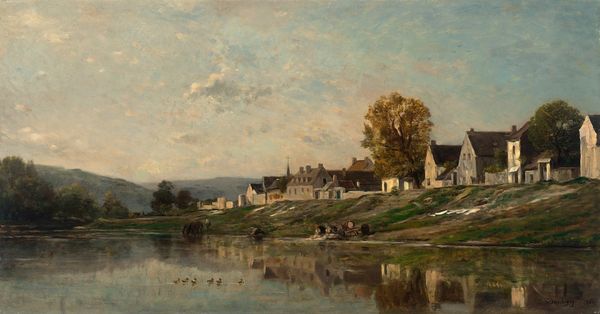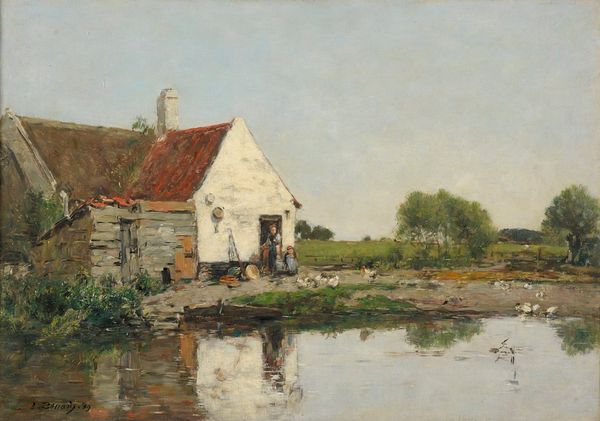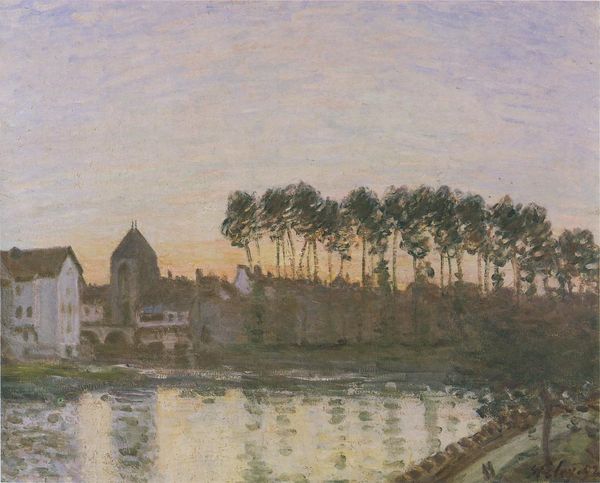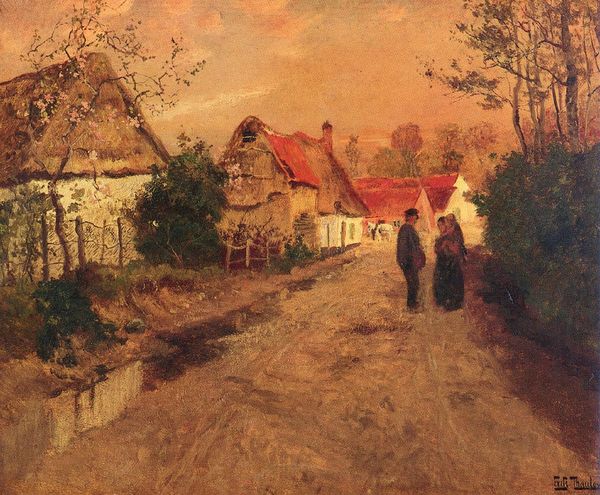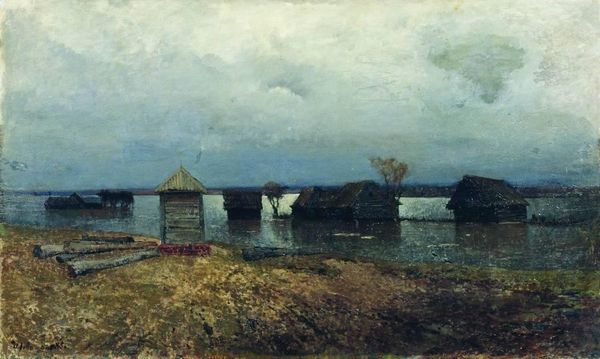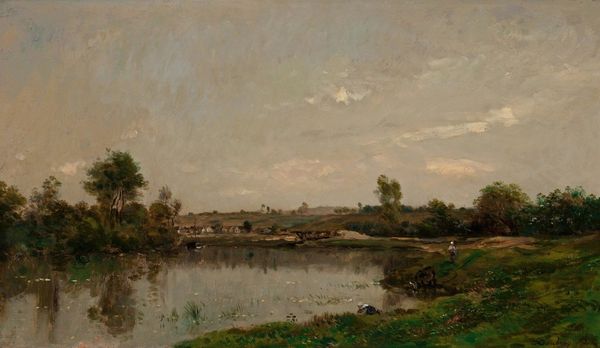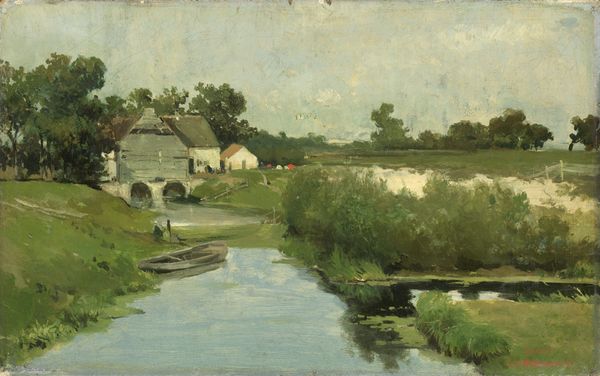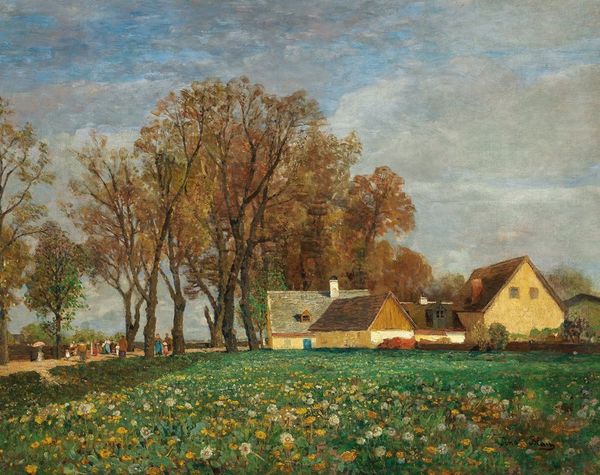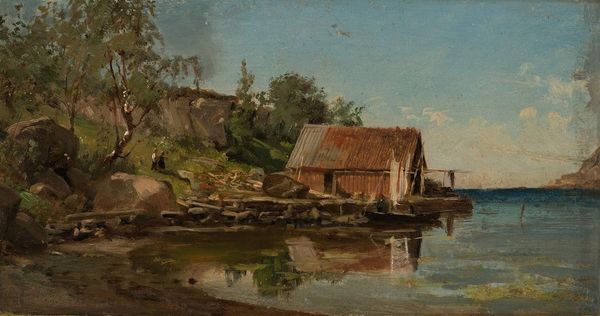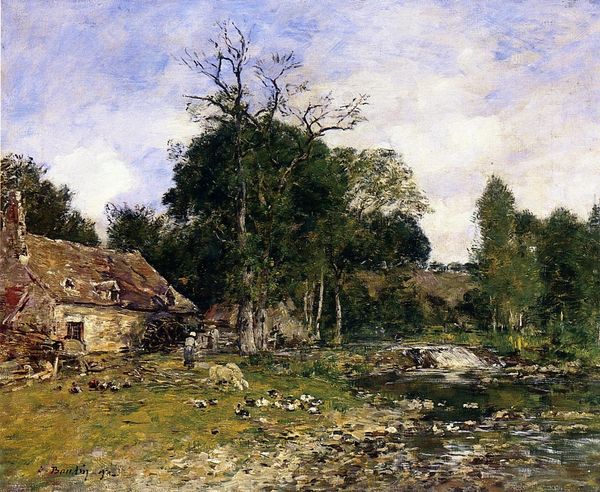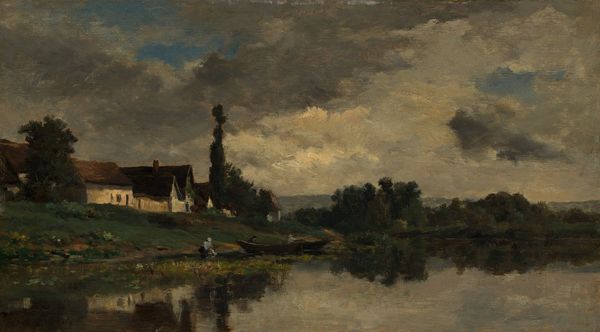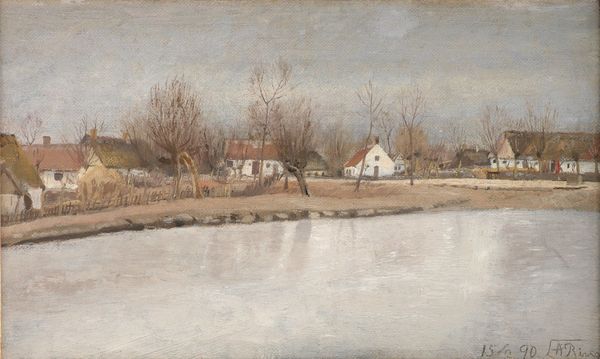
Copyright: Public Domain: Artvee
Editor: We're looking at "The Hamlet of Optevoz," painted by Charles-François Daubigny around 1852, using oil on canvas. The subdued palette gives it quite a somber, almost melancholic mood. What catches your eye about this work? Curator: Well, focusing on the materiality, consider the oil paint itself. Daubigny wasn't just representing a rural scene, he was engaging in a particular mode of production. The brushstrokes, the thickness and layering of the oil paint, show labor. This wasn't just observation; it was about physically working with the materials to construct an image that reflects a very specific socio-economic moment. Note the way the buildings and animals are rendered. Editor: You mean how he's capturing the details of their daily existence? Curator: More than that. How does Daubigny's technique influence the narrative of labor and the social status inherent in the painting? How does his method relate to the changing world beyond the frame - early industrialization and urbanization, with painting itself becoming a product to be consumed? Editor: So you're saying it’s not *just* a pretty landscape; the very way he painted it tells us something about the changing relationship between humans and their environment and production, like, farming becoming factory work? Curator: Exactly. It is an investigation of how an artistic interpretation like this, while appearing to depict pastoral peace, might participate in complex socio-economic networks. Considering art's materiality urges us to move beyond an appreciation of its aesthetic merit alone. Editor: That’s a really insightful way to look at this, framing it through the labor and material engagement behind the final image. Curator: I'm glad you see it. Looking at the creation as an active practice opens doors to a deeper awareness.
Comments
No comments
Be the first to comment and join the conversation on the ultimate creative platform.
